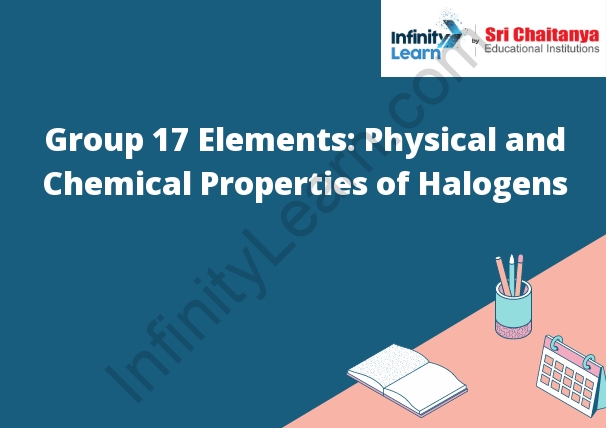Table of Contents
Physical and Chemical Properties of Group 17 Elements (Halogens)
Group 17 elements are all highly reactive, and they all share similar physical and chemical properties. They are all nonmetals, and they all have one or more electrons in their outer shells that they want to share. This makes them very reactive, and they will all form compounds with other elements. They all have very low boiling points and melting points, and they are all very soluble in water.

Electronic Configuration
The electronic configuration of an atom is the specific arrangement of electrons in an atom. However the electrons in an atom are arranged in shells and subshells. The shells are designated by the letters s, p, d, and f. The subshells are designated by the letters s, p, d, and f. The number of electrons in a shell is equal to the number of protons in the nucleus. The number of electrons in a subshell is equal to the number of protons in the nucleus divided by two.
Occurrence of Plant Species
A plant species is a group of organisms that share a common ancestor and can produce fertile offspring. A plant species can be divided into subspecies, varieties, and forms.
It can identified by its physical characteristics, such as leaf shape and color, flower shape and color, and fruit shape and color. In addition, plant species can identified by their DNA sequence.
Atomic Properties
The physical and chemical properties of atoms determined by the number of protons in the nucleus. Therefore the number of protons in an atom’s nucleus determines which element it is. The number of protons also determines an atom’s atomic number.
Trends in Atomic and Ionic Radii
- The atomic radius of an atom is the distance from the center of the atom to the outermost electron. The ionic radius of an atom is the distance from the center of the atom to the outermost electron when the atom has lost or gained one or more electrons.
- The atomic radius of atoms generally decreases as the number of protons in the nucleus increases. This is because as the number of protons in the nucleus increases, the electrostatic force between the protons and the electrons increases. This force pulls the electrons closer to the nucleus, resulting in a smaller atomic radius.
- The ionic radius of atoms generally increases as the number of protons in the nucleus increases. This is because as the number of protons in the nucleus increases, the number of electrons that can be lost or gained increases. This increases the size of the ionic radius.
Physical Properties
Physical properties are those that can observed or measured without changing the composition of the substance.
Some common physical properties of substances include:
- color
- shape
- texture
- density
- melting point
- boiling point
- solubility
- Electrical Properties
- Electrical properties are those that can observed or measured when the substance is in an electrical field.
Some common electrical properties of substances include:
- conductivity
- insulation
- resistivity
- dielectric strength
- Thermal Properties
- Thermal properties are those that can observed or measured when the substance is in a thermal field.
Some common thermal properties of substances include:
- thermal expansion
- Conductivity
- thermal capacity
- See also:
- Chemical Properties
- Physical States
Chemical Properties
-
Appearance:
colorless to light yellow liquid
-
Odor:
slightly aromatic
-
pH:
3.5-4.5
-
Boiling Point:
>200°C
-
Melting Point:
-73°C
-
Vapor Pressure:
1 mm Hg at 25°C
-
Evaporation Rate:
<0.01 (ethylamine)
-
Solubility:
miscible with water
-
Specific Gravity:
0.8-0.9
-
Solubility in water:
miscible
Anomalous Behaviour of Fluorine in Water
The anomalous behaviour of fluorine in water a physical phenomenon that has yet to be fully understood. Fluorine a gas at room temperature, but when it dissolved in water, it forms a liquid that is much more acidic than water itself. The exact reason for this behaviour is not yet known, but scientists currently working to find out more about it.
Applications of Halogens
- The most common application of halogens is in the production of chlorine and also sodium hydroxide.
- Chlorine used in the production of many common household items such as bleach, disinfectants, and swimming pool chemicals.
- Sodium hydroxide used in the production of soap, detergents, and other household cleaning products.








